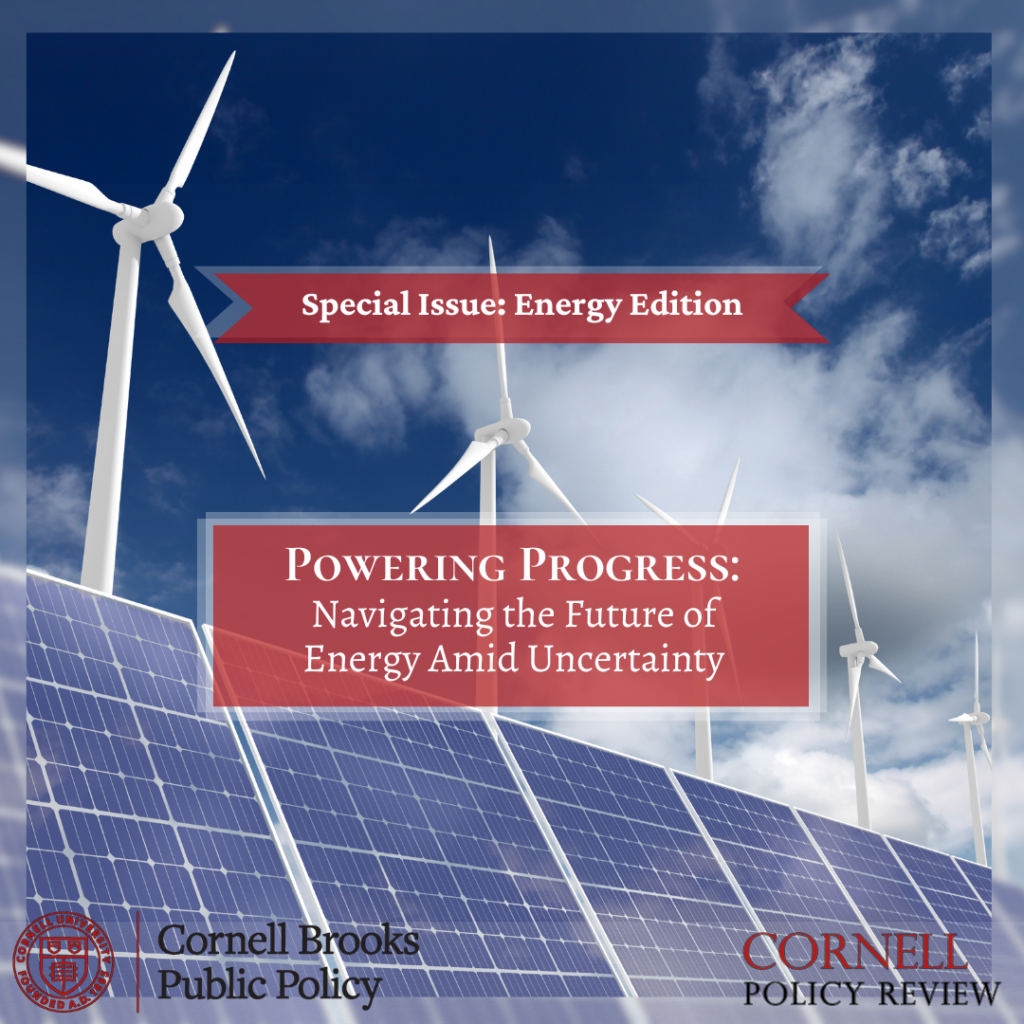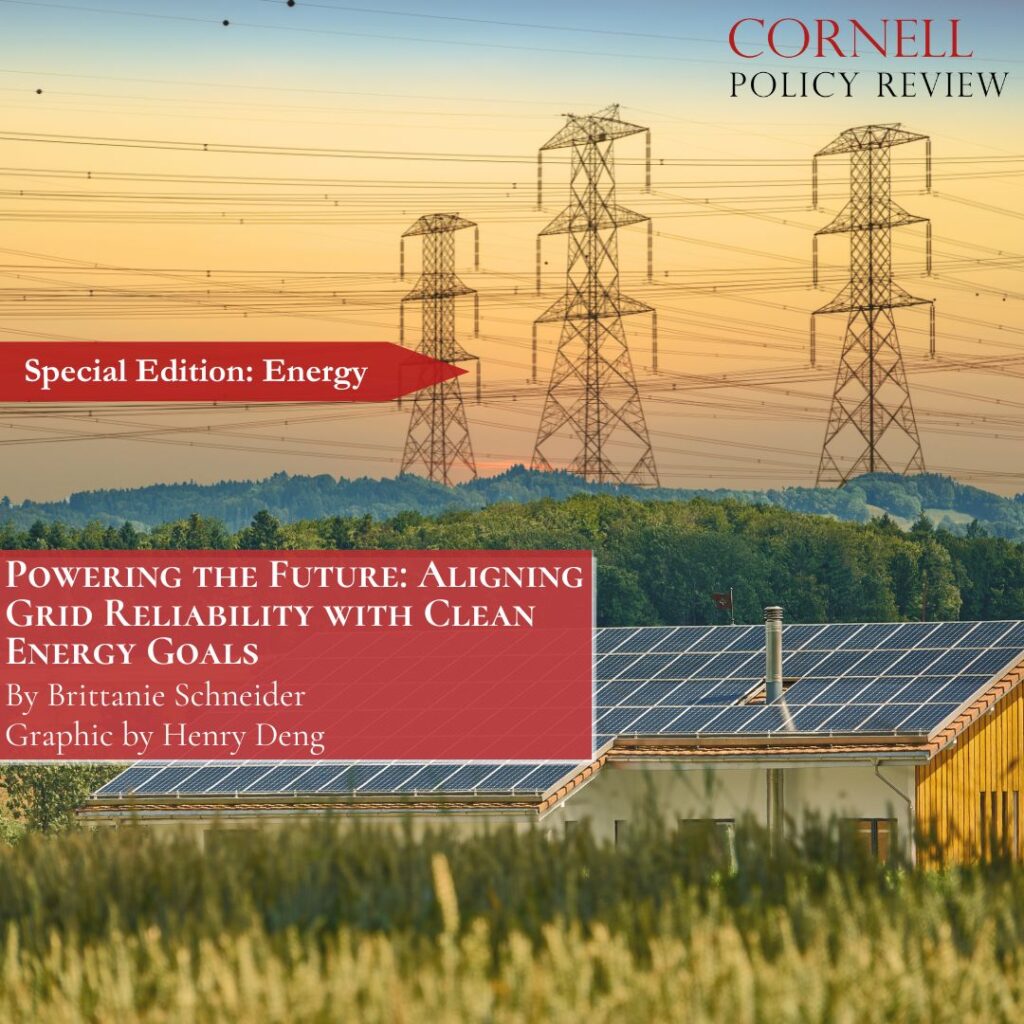By: Rifki Darmawan
Edited By: Maddie Miele
Introduction
The incoming 47th President of the United States, Donald Trump, has expressed a strong political commitment to reversing several progressive policies implemented during the Biden-Harris administration. These include rolling back social, healthcare, immigration and especially climate and environmental policies. Since President-elect Trump is empowered by Republicans, this leads to setbacks on key climate and environmental policies. Additionally, a strong presumption occurs based on what he did in his first term presidency and promises he created during his presidential campaign. For example, he withdrew the United States from the Paris Agreement in 2017, 1 to fulfil his promises during his campaign trail.
One of his primary promises is to undo environmental regulations that will be rolling back the Biden-Harris administration’s climate-focused priorities. A policy that could potentially have twists and turns is the environmental policy called the Inflation Reduction Act (IRA). Trump will try to stop it and prioritize brown sector energy over green and clean energy initiatives, especially for oil and gas. During the 2024 presidential campaign, he signaled that he could reinforce a deregulatory agenda by reciting “drill, baby, drill.” However, rejecting a well-established act is not that easy during his second term. This notion appears because Republican elected officials have received benefits from the IRA policy establishment and officially sent a letter supporting clean energy tax credits in August 2024. 2,3,4 This article argues that policy like the IRA under the second term of Trump’s administration must be seriously supported not only to boost energy inside the country but also to advance economic resilience and global leadership.
Trump’s Energy Policy: “Drill Baby Drill”
Trump has thrown around a lot of intense claims relating to environmental protection. He called the Paris Climate Accord “a disaster, a death sentence,” 5 and the climate crisis a “big hoax.” 6 Lastly, “drill, baby, drill” is a rhetoric that he used during his campaign trail to emphasize a return to aggressive fossil fuel exploration. To better understand his view on why he is opposing the climate agenda, we must know about the American Petroleum Institute’s (API) stance on the United States energy. They believe that the United States must develop domestic energy to maintain national and energy security, as well as economic prosperity. According to the API’s “10 in 2022” policy plan, the United States must lead global energy through increasing oil and gas production. 7
Moreover, it is essential to examine why and how the Republican Party persistently advocates brown industries across the United States. From 1990 until now, the Republicans have received a huge amount of financial support from the oil and gas industries in the United States. 8 This relationship indicates that Republicans favor fossil fuel development. Knowing that context, it is no wonder why Trump’s campaign strategy consistently promoted oil and gas.
The Inflation Reduction Act: Where the Red States is the Main Beneficiaries
The IRA has marked a pivotal moment in the United States’ commitment to clean energy and environmental sustainability as it was signed by President Biden in 2022. This policy provides nearly $400 billion in funding towards clean and innovative technologies. 9 This transformation landmark legislation has led to a surge in funding which is not only fostering innovation but also expected to create numerous jobs. The law itself encouraged domestic energy production to have energy security and eventually triggered other nations to enhance their climate policies and investments to remain competitive. This positioned the United States as a leader in clean energy.10
According to a McKinsey report, the IRA makes investments across a wide range of sectors including: Energy ($250.6 billion), Manufacturing ($47.7 billion), Environment ($46.4 billion), Transportation and Electric Vehicles ($23.4 billion), Agriculture ($20.9 billion) and Water ($4.7 billion).11 These funds will be channeled through tax incentives, loans and grants mechanisms. However, despite the United States’ commitment to addressing the climate crisis through this policy, the Republican Party strongly opposed it from the start. In 2022, zero Republicans voted for the IRA.
After two years, despite the resistance, funding from this policy has flowed disproportionately into Republican-held states and congressional districts.12 According to data from the Massachusetts Institute of Technology and Rhodium Group through Clean Investment Monitor, investments for clean energy were poured across ten states, nine of which are led by Republicans.13 These Republican-leaning states are major fossil fuel producers while also having robust agricultural industries. With the support of the IRA, agricultural waste in these states has the potential to become a valuable input for the clean and renewable energy industry. 14 This further incentivizes the continuation of the bill as these states increasingly benefit from it.
Since IRA emerged, approximately 107 of the 191 total clean energy projects have been located in 72 congressional districts across the country that are represented by House Republicans.15 As the IRA also focuses on the agriculture sector, it is the chance to consolidate energy and agriculture of the United States mission through the Agricultural Waste-to-Energy (AWE) to achieve the United States climate commitment, especially to enhance Republican participation in the policy implementation of the IRA.
Agricultural Waste-to-Energy: The United States’ Energy and Political Transition
It is inevitable that renewable and clean energy create three times as many jobs per dollar spent compared to fossil fuels.16 Oil and gas companies can provide a short-term profit. However, in the long-term, the economic prospects are hard to gain due to the global shift towards renewable and clean energy. Besides the bill funding clean energy, the money will also go towards more general conservation efforts and sustainable agricultural development and economy. The act’s Title II, commits to generate approximately $40 billion towards investments and projects designed to promote climate-smart models of farming, as well as protect the livelihood of farmers and foresters.17
The agricultural production in the United States is led by California (11.8 percent), Iowa (8.0 percent), Nebraska (6.1 percent), Texas (5.7 percent), Minnesota (5.0 percent) and Kansas (4.4 percent).18 The Democratic-leaning states (California and Minnesota) produce agricultural output 16.8 percent in total. Around 24.2 percent of agricultural waste in the United States is coming from the Republican-leaning states, such as Texas, Iowa, Kansas, and Nebraska. These Republican-leaning states, which dominate the agricultural sector, can have additional investment if only they convert their agricultural waste into valuable things such as clean energy. The abundance of its agricultural product, including its waste, also can be beneficial to the communities who live there.
For instance, a state who is already doing this innovative approach is California. In April 2023, California announced that $3 million boost innovative technologies that would transform biomass to carbon-negative energy, which will also improve forest health, reduce wildfire risk, and improve the state’s watershed in the Sierra Nevada.19 While this disbursement is about forest waste, we still can learn from it. The forest waste is often simply collected and burned right after or left to decompose which results in increased greenhouse gas emissions. One example within this idea is Yosemite Clean Energy, LLC. This company was supported by the state government to develop a 50-megawatt forest waste biomass-to-hydrogen plant that will process more than 90,000 tons of forest biomass annually and create 55 jobs benefiting foresters and their surroundings.
If we expect the 24.2 percent of agricultural waste is adding value by converting to clean energy, it is not only transforming the clean energy landscape in the United States, but it is also shifting Republican’s political idealism toward the IRA. Additionally, investing in AWE projects will have a chance to stimulate rural economies by creating new industries centered around biomass conversion. A recent publication from Sustainability Science shows that investing in clean energy can create more jobs than traditional fossil fuel industries.20 Meanwhile, Republican-leaning states that are benefitting from this federal investment (re: incentives), are bridging political divides by demonstrating bipartisan support for energy solutions in the United States. This was indicated by eighteen Republican representatives who sent an official letter to the Speaker of the House. 21
U.S. Should Stay in Global Climate Fight
Former President Donald Trump who is now elected again as 47th President of the United States might hamper the progressive policy like the IRA. But economic realities and the strong demand for the IRA from Republican-leaning states suggest that it is not that easy for Trump to withdraw the IRA during his second term. They have received more money than Democratic-leaning states and proved that the IRA has catalyzed economic growth and climate resilience in conservative regions – showing a complete reversal of the IRA would face resistance from within the party itself indicated by the official letter from Republicans.
Moreover, this environmental blueprint preserves a growing pace for the domestic clean energy industry. Thus, the temporary conclusion is if only Trump successfully repeals Biden’s climate and clean energy law, the Republican-leaning state will stand to lose the most. Many experts agree that no matter what happens to the IRA, it will continue to expand its foothold because of technological advances and economic benefits.22 Lastly, the IRA is considered a giant leap for renewable energy and climate challenges across the globe. By repealing this act, it would be disastrous for domestic economic growth and degrade the environment.
Works Cited
1. Pompeo, Michael R. 2019. “On the U.S. Withdrawal from the Paris Agreement.” United States Department of State. November 4. https://2017-2021.state.gov/on-the-u-s-withdrawal-from-the-paris-agreement/
2. Siegel, Josh, Kelsey Tamborrino, and Jessie Blaese. 2023. “Democrats’ Climate Law Set Off a Wave of Energy Projects in GOP Districts. A Backlash Followed.” POLITICO. August 13. https://www.politico.com/news/2023/08/13/biden-inflation-reduction-act-climate-states-00110940
3. H.J, Mai. 2023. “Biden’s Climate Bill Brings Investments and Jobs to Many GOP Strongholds.” NPR. August. https://www.npr.org/2023/08/18/1194562279/gop-lawmakers-opposed-bidens-climate-measure-but-its-helping-their-constituents
4. Garbarino, Andrew. 2024. Garbarino.house.gov. https://garbarino.house.gov/sites/evo-subsites/garbarino.house.gov/files/evo-media-document/FINAL%20Credits%20Letter%202024.08.06.pdf
5. Peters, Gerhard, and John T. Woolley. 2017. “Remarks at a ‘Make America Great Again’ Rally in Latrobe, Pennsylvania | the American Presidency Project.” Ucsb.edu. https://www.presidency.ucsb.edu/documents/remarks-make-america-great-again-rally-latrobe-pennsylvania
6. Niranjan, Ajit, and Oliver Milman. 2024. “‘A Wrecking Ball’: Experts Warn Trump’s Win Sets Back Global Climate Action.” The Guardian. The Guardian. November 6. https://www.theguardian.com/us-news/2024/nov/06/trump-climate-change-environment-threat
7. American Petroleum Institute. 2022. “New Study Details Economic, Energy Security Benefits of API Plan to Restore U.S. Energy Leadership.” Api.org. https://www.api.org/news-policy-and-issues/news/2022/11/01/new-study-on-economic-energy-security-benefits-of-api-plan?utm_source
8. Aizarani, Jessica. 2023. “U.S. Oil & Gas Lobbying Spend by Party 2022.” Statista. January 31. https://www.statista.com/statistics/788056/us-oil-and-gas-lobbying-spend-by-party/
9. McKinsey. 2022. “What’s in the Inflation Reduction Act (IRA) of 2022.” October 24. https://www.mckinsey.com/industries/public-sector/our-insights/the-inflation-reduction-act-heres-whats-in-it
10. Letzing, John, and World Economic Forum. 2023. “The Inflation Reduction Act Boosted Clean Energy in the US, and Beyond.” World Economic Forum. September 6. https://www.weforum.org/stories/2023/09/inflation-reduction-act-clean-energy-us-global-impact/?utm_source
11. Mckinsey. 2022. “What’s in the Inflation Reduction Act (IRA).”
12. Brownstein, Ronald. 2024. “Why Green Investments Have Become the Last Line of Defense for Biden’s Climate Agenda.” CNN. November 26. https://www.cnn.com/2024/11/26/politics/green-investments-red-states-biden-trump-analysis/index.html
13. Kommenda, N., Osaka, S., & Muyskens, J. 2024. “See how the Inflation Reduction Act is affecting your community” The Washington Post. October 28. https://www.washingtonpost.com/climate-environment/interactive/2024/climate-bill-biden-clean-energy/
14. Brownstein. 2024. “Why Green Investments Have Become the Last Line of Defense.”
15. Climate Power. 2023. “The Clean Energy Boom in House Republican Districts More than Half of New Clean Energy Projects, Jobs and Investments Are Located in Districts Represented by House Republicans.” https://climatepower.us/wp-content/uploads/sites/23/2023/04/Clean-Energy-Boom-Republican-Districts-1.pdf
16. Heintz, James. 2009. “Clean Energy Investments, Jobs, and U.S. Economic Well-Being: A Third Response to Heritage Foundation Critics.” Research Briefs. Political Economy Research Institute, University of Massachusetts at Amherst. February 2. https://ideas.repec.org/p/uma/perirb/response_to_heritage_foundation_august4.html
17. Opinion Department. 2022. “Inflation Reduction Act Improves Potential Research Initiative within Cornell’s CALS School – the Cornell Daily Sun.” The Cornell Daily Sun. September 12. https://cornellsun.com/2022/09/12/inflation-reduction-act-improves-potential-research-initiative-within-cornells-cals-school/
18. Carlin, Doug. 2021. “All 50 US States Ranked by Agricultural Production [Report 2022].” Https://Usabynumbers.com/States-Ranked-By-Agricultural-Production/. April 8. https://usabynumbers.com/states-ranked-by-agricultural-production/
19. California, Department of Conservation. 2024. “State Invests $3 Million to Convert Forest Waste into Carbon-Negative Fuel Development.” Ca.gov. https://www.conservation.ca.gov/index/Pages/News/State-Invests-3-Million-Convert-Forest-Waste-into-Carbon-Negative-Fuel.aspx
20. Hanna, Richard, Philip Heptonstall, and Robert Gross. 2024. “Job Creation in a Low Carbon Transition to Renewables and Energy Efficiency: A Review of International Evidence.” Sustainability Science 19. January. https://doi.org/10.1007/s11625-023-01440-y
21. Garbarino, Andrew. 2024. Garbarino.house.gov.
22. Brownstein. 2024. “Why Green Investments Have Become the Last Line of Defense.”


